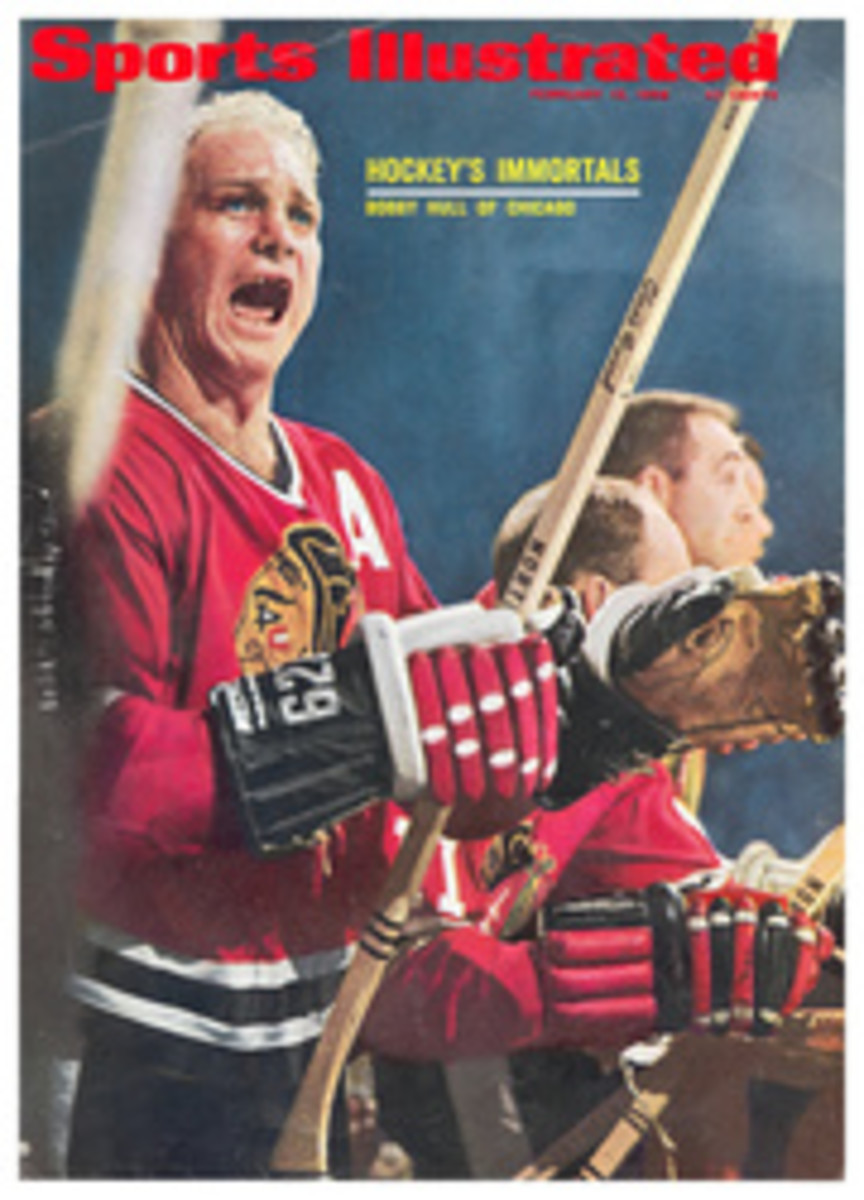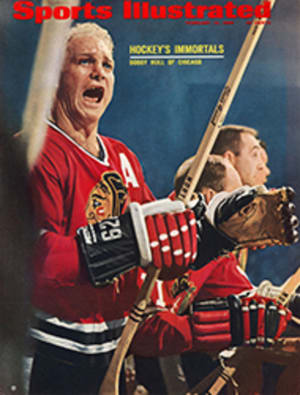
Achtung! Achtung! The Porsches are coming!
"There was consternation in America last summer when the Poobahs of auto racing suddenly changed the rules for sports-car endurance events, barring the big Fords, Ferraris and Chaparrals that had given Le Mans and the other classic races some of their most exciting hours. Firing the stars of the show, it was thought here, came as close as a major element of auto racing has ever come to cutting its own throat. When the new season began last weekend with the 24-hour race at Daytona Beach, Fla. the question was: How much blood had the patient lost? The answer is: plenty.
The only truly happy man at Daytona was Count Huschke von Hanstein, the director of racing for Germany's Porsche works, who watched the drivers of his long-tailed 2.2-liter 907 coupes sweep the first three places, led to victory by Vic El-ford of England (who two weeks ago won the Monte Carlo rally for Porsche) and German codrivers Jochen Neerpasch and Rolf Stommelen. The one positive result of the race is that Porsche—long overshadowed by the bigger cars despite its excellence and its consistency in winning prizes for medium-sized engines—is now the endurance star and may remain so all season long.
Without Enzo Ferrari and that Detroit swinger Henry Ford II throwing hot sparkplugs at each other and at lanky Jim Hall's shiftless Chaparrals, the beach was long on talk and short on quality racers. Nearly everybody found some excuse to bad-mouth the rulesmongers of the International Automobile Federation. Driver Mario Andretti said discreetly, "It's awfully quiet down here this year, isn't it?" Mark Donohue was more emphatic: "What they did is awful. It knocks the American manufacturers right out of international racing."
And in his big office overlooking his speedway domain Promoter Bill France grumbled, "They didn't give enough warning. It would have been nice to have the Fords, Ferraris and Chaparrals around at least for our race and Se-bring."
As a hedge against not having enough cars at the starting grid—a real possibility considering the equipment that did show up—France incorporated the season's first Trans-American sedan race for Mustangs, Camaros, Darts and the like into the 24 hours. Good thing, too. Twenty-three of the 63 starters were Trans-Am cars, and won't it be a shock to the Le Mans people when those cars don't show up for their race in June? Even so, there were really only three hot Trans-Am cars of the larger size: two Mustangs entered by Carroll Shelby and a Camaro fixed up by Roger Penske.
A second Camaro was entered by Daytona's own Smokey Yunick, to be driven by Hall and Bruce McLaren. But Smokey seems to have this problem with technical inspections. When the Sports Car Club of America tech boys presented him with a long list of modifications he would have to make he mumbled something like, "Forget it, fellas," from the depths of his Stetson, and took the car back to "the best damn garage in town."
That left most of the prerace entertainment to the Howmet TX, a racer that uses a Continental turbine and emits what is coming to be known as the Andy Granatelli whine—Andy being the man who shook Indianapolis with his turbine. Howmet is a cute way of saying know-how in metals. The Howmet Corporation, which makes everything from sophisticated turbine blades to artificial joints for people who break their own (most notable patients: Casey Stengel and Arthur Godfrey), entered the 24 hours of Daytona as a technical exercise. When the FIA announced in November a formula that made the car eligible to run in the prototype class, there were some dreams of glory.
Howmet came to Daytona with two cars, a racer and a show car, and two drivers, Dick Thompson and Ed Lowther. In practice on Wednesday the racer's engine failed. Thompson, who was driving, said, "I thought the whole car was gone. It made a terrible bang." That eliminated the race car, but 48 hours later the show car was ready to go, and Thompson qualified it at 113.21 mph, a surprising seventh best. That put it ahead of the factory Alfa Romeos, the only other cars, besides the better Trans-Am racers, with a serious chance to give Porsche any challenge, and the Alfas' two-liter engines were giving away horsepower to the larger Porsche 907s.
But the Porsche people, from Von Hanstein on down, did not appear concerned about the FIA, turbines or anything else. In fact, their garage area was a picture of Teutonic precision and serenity all week. Elford said, "We're running at about 8,200 rpm, which is quite low. Over that, we get fined."
During qualifying on Friday the Porsche 907s went out early in the morning and got into the race in third through sixth positions, trailing a pair of English-entered Ford GT-40s that included the pole car driven by Belgian Jackie Ickx at 119.37 mph. The GT-40 is a grand touring car, not to be confused with the Le Mans-winning Ford Mark IV. Ickx's speed was 2.5 mph faster than the quickest Porsche, but nobody on the Porsche team worried about the speed of a car of doubtful stamina. During the last practice session before qualifying, the four long-tailed cars were resting quietly under plastic shrouds. The entire Porsche crew had taken the day off to visit Cape Kennedy. Everybody else could have spent the week there, too, for all the good their preparations did them.
The whole thing wasn't quite that easy, but the two problems the Porsche team had—a massive accident and a broken throttle linkage—were more its own doing than anything else. As expected, Ickx, in the GT-40, took the lead when the cars got sorted out after the start at 3 p.m. Saturday. He held it for two and one-half hours, or until Co-driver Brian Redman took over and discovered his transmission had broken down. Then the second GT-40, driven by Paul Hawkins and David Hobbs, went ahead and set a hot pace until just before midnight, when a brake-pad change took an inexplicable 40 minutes and let three factory Porsches into the first three positions. From then on it was just a matter of waiting around through the long, cold night and a very hot Sunday to see which Porsche would take the checkered flag.
In the fourth hour the only serious accident occurred. It was a beaut and very nearly cut the Porsche team in half. Gerhardt Mitter, in Car No. 53, spun on an oil slick near the end of the tri-oval straight, punctured a tire and flipped at 120 mph. Coming behind, Masten Gregory—in one of two outclassed Ferraris entered by Enzo's man in New York, Luigi Chinetti—spun and flipped, and behind Gregory a private Porsche, driven by Dieter Spoerry, spun and wound up wrecked against the outside wall. The first car to reach the debris was Elford in Porsche No. 54. "I couldn't see a thing except dust," he said. "But I didn't have much choice as to where to go." Fortunately he went low, avoided Spoerry by inches and continued on.
Then around 11 a.m. Sunday the throttle linkage on Jo Siffert's leading Porsche broke, and he spent nearly half an hour getting that back together and in the process gave up the lead to the Elford car for good. He completed 2,526 miles at an average speed of 106.697 mph.
The turbine made an excellent, but short-lived, showing. Thompson moved it from seventh place to fourth during the first hour; but the throttle stuck when Lowther took his first driving turn and the grand experiment wound up against the wall and out of the race.
In the Trans-American division Penske's Camaro led early, until a cylinder head let go. The Horst Kwech-Allan Moffat Shelby Mustang had a suspension failure, and the other Shelby car, driven by Jerry Titus and Ronnie Bucknum, coasted home an easy class winner, fourth overall but some 165 miles behind the winning Porsche. Another Porsche was the Trans-Am two-liter winner.
The Alfas were never really in the race. This was their first serious venture in years, and a lot of bugs needed to be worked out, both in the engines and among the pit crews, who attacked the racers with operatic inefficiency.
Although the race lacked the excitement of the previous Ford-Ferrari duels, there was at least some heartening news for European fans. Both Porsche and Alfa are working on engines right at the three-liter maximum, and there is a good chance that one or maybe both factories will have them ready for the Se-bring 12 Hours on March 16. If not by then, surely by Le Mans in June. The patient will live, but a transfusion is indicated.
PHOTO

